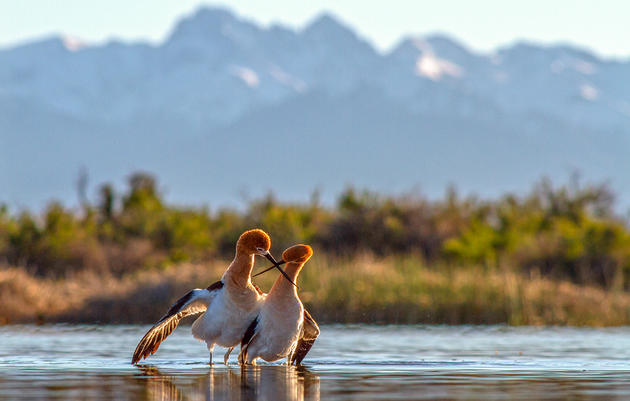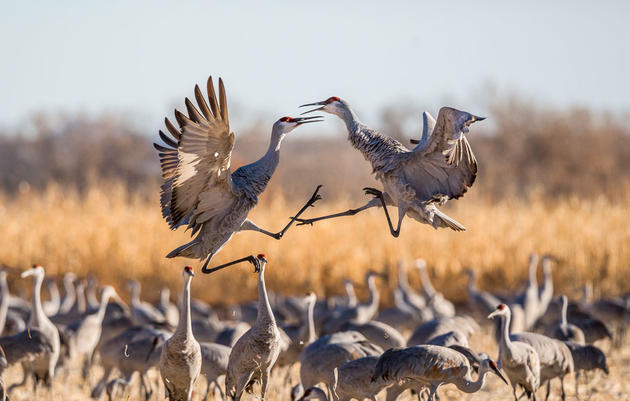Every year, Sandhill Cranes make remarkable journeys from southern parts of the United States all the way to the Arctic Circle. The subspecies I know best, the Greater Sandhill Crane, follows a route from southern New Mexico to northwestern United States and Canada. Between these two locations is a special rest stop that provides them with shelter and food as they continue their journey. This unique layover also happens to be my home: the San Luis Valley of Colorado.
About 20,000 Sandhill Cranes spend spring and fall in the vast San Luis Valley. For about a month these cranes wait out the harsh weather up north and put on body fat for their upcoming migration. They also use this time to find mates or strengthen the bonds with their existing mates. Sandhill Cranes mate for life and continuously express their devotion. To do this, they perform a majestic dance in which pairs jump up and down in unison. Photographing this spectacular behavior is something truly unforgettable and magical.
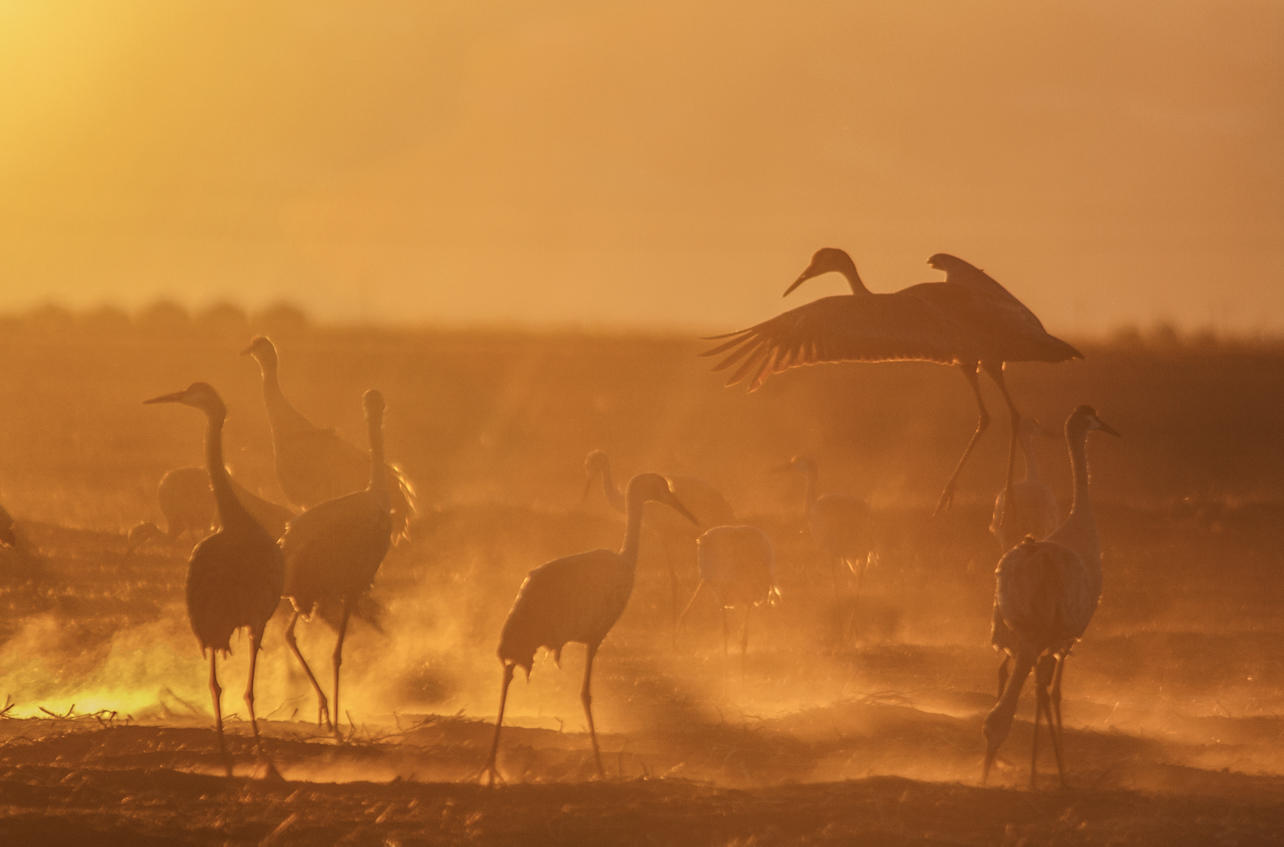
Because I have grown up watching the crane migration my whole life, my first experience with the migration was when I was very little. I just remember the cooing and calling as the cranes flew over my house and seeing this large group of birds soaring high in the sky. For me, the arrival of the cranes in mid to late February marks the transition from winter to spring. Now, at 14 years old and an aspiring nature photographer, I have an even greater appreciation for the migration and just how special these birds really are.
My most memorable experience of the migration was in a barley field near the Rio Grande River. The cottonwood trees by the river were bright orange in the middle of fall and the cranes were back in full force. My dad and I were excitedly watching a flock of about 400 cranes eat and dance when I noticed a pair begin to dance near me. I swung my camera over and watched through the viewfinder, holding the shutter down as they leaped and called in front of this spectacular background. The result was one of my favorite images of Sandhill Cranes.
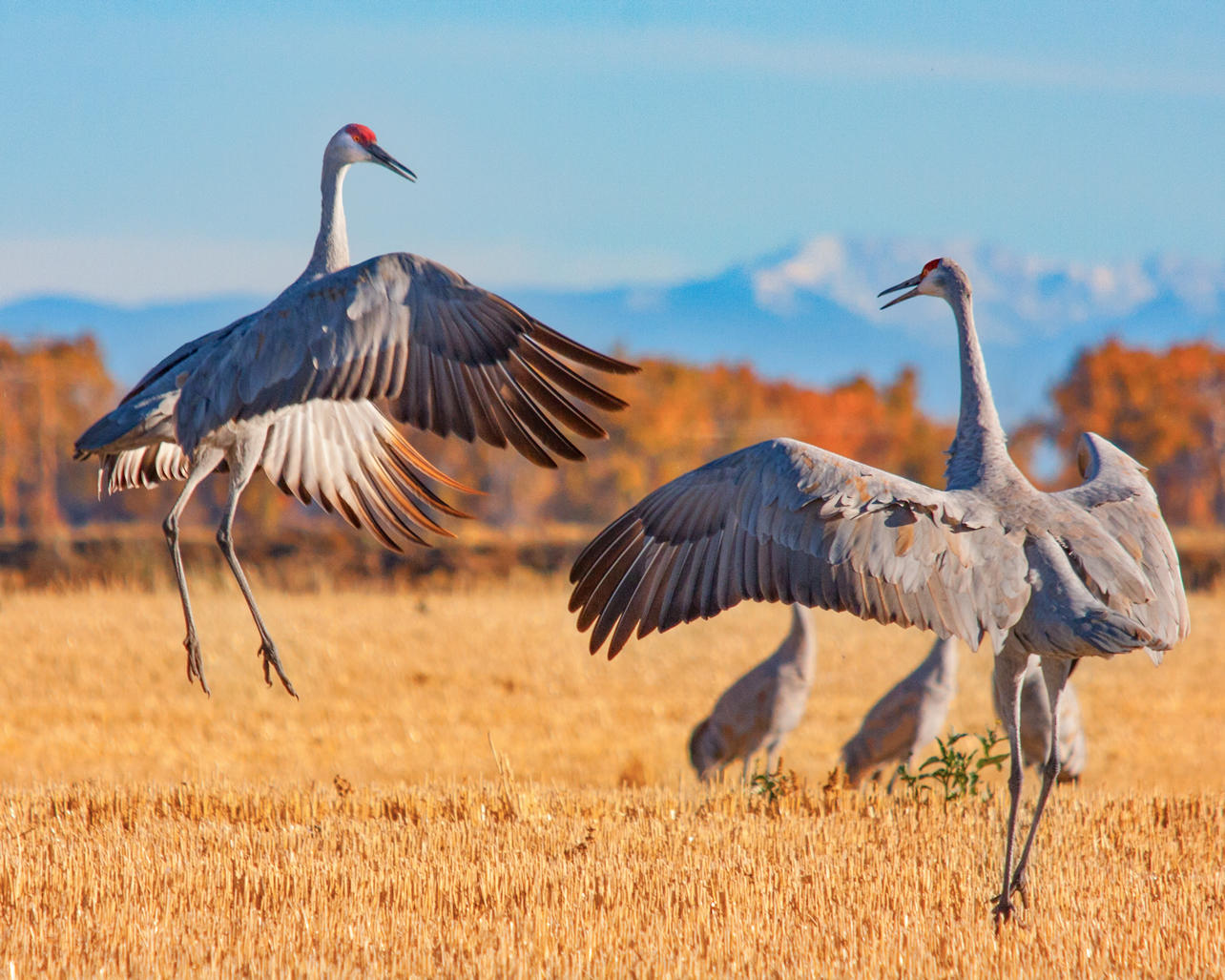
The Sandhill Cranes mean so much to me and living in the Valley would not be the same without their remarkable migration in the spring and fall. While these majestic birds are currently considered a species of least concern by the International Union for Conservation of Nature, the rivers, wetlands, and agricultural fields they depend on are at risk from variable water supply, overuse of water resources, and development. I believe that it’s our job to protect these birds in the future by conserving their habitat.
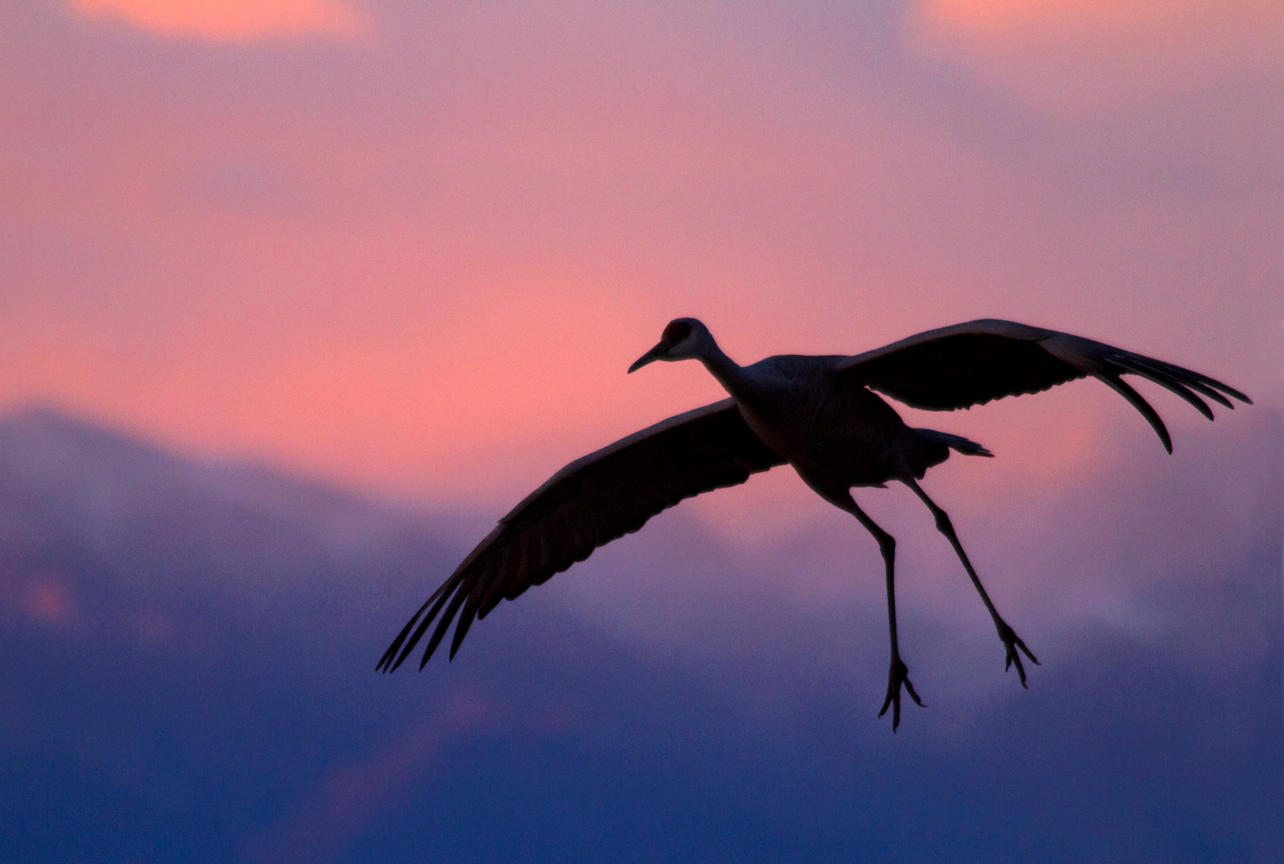
You can view more of Arrow’s fantastic photography on his website or Instagram.






